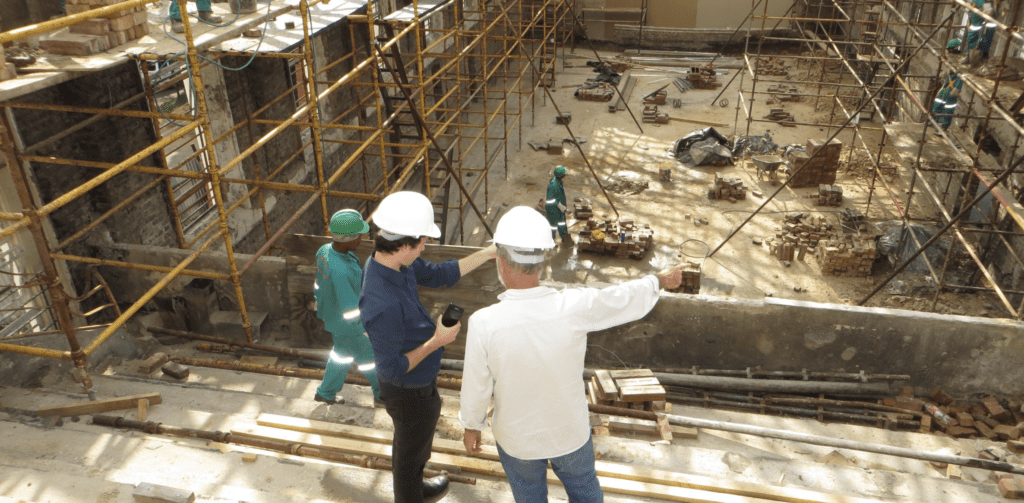
Subcontractor Pre Qualifications: All You Need to Know

Finding a great subcontractor is hard, and it’s difficult to know if a sub is good or not until you work with them. By prequalifying subs, GCs can establish a pool of contractors that they know will complete the work and provide the quality their customers expect. Prequalification helps GCs select the cream of the crop.
What is subcontractor prequalification?
The process of subcontractor prequalification provides general contractors a way to assess subs before hiring them on a project. The GCreviews the sub’s compliance documents and experience to determine if they would be successful working together. During prequalification, GCs are looking for red flags that might indicate the sub won’t be a good fit: they’re not financially stable, bad reviews, hard to work with, substandard work, etc.
Prequalification is used by many GCs, as well as cities,municipalities, states, and education systems. These companies and jurisdictions require contractors and subcontractors to submit information about their company before allowing them to bid on their work. This helps ensure the quality of the work and that the contractor will complete projects when they are awarded to them.
Advantages of pre qualifying subcontractors
GCs who prequalify their subcontractors have access to a pool of experienced craftsmen that they know will provide quality work. It provides them a way to get to know a sub without having to work with them. They will often invite this group to bid on their projects, as they can be sure that they’re getting competitive bids and they will complete the project.
Prequalifying subs also helps GCs and project owners to mitigate project risk. There’s less chance that these subs will provide substandard work, have payment issues, or create project delays. During the prequalification process GCs do their best to weed out subs who will not meet the quality standards for their projects.
Another advantage of pre qualifying subs is that GCs can use this list when they have an urgent need on a project. Subs on the list may getwork without having to bid against other subs if they can answer the call. The GC already knows they can rely on these subs because they’ve passed their review process.
On bid day, estimators only have to worry about qualifying a sub’s price and scope when they’re already on the GC’s list. This makes their jobs easier, meaning they can bid for more work.
How to rollout subcontractor prequalification
There are many ways that you can start your program of subcontractor prequalification. Many software packages include pre-qualification modules that you can use to start the process. These systems are easy to implement. Just enter the questions you want answered and send an invitation to the sub through theplatform to complete the information and send in backup documentation. Once a sub responds, reviewers are notified to review the documents and decide whether the subcontractor passes or not. All the information is kept in one location, is easily accessible by all team members, and the automated process will save your team time.
You can also host your prequalification program on your website. Create a webpage specifically for prequalification and add a form for subs to fill out on that page. The responses can then be distributed via email to reviewers, and they can decide whether the sub meets the qualifications or not.
Another way to send out a prequalification request is by email. You can reach out to each sub requesting the required information. Once they respond, their response can be forwarded to your reviewers and be processed accordingly.
What information to request
Each general contractor has their own requirements for prequalification, so they may ask for a different set of documents depending on their needs. But here’s a general list to get you started:
Licenses
Ask for copies of contractor, business, and specialty licenses. Make sure they are current and that the business is in good standing with the state or municipality who issues the licenses. Use sites like the Better Business Bureau and Dun & Bradstreet to look for business issues.
Insurance
Ask the sub to submit proof of business insurance, including general liability, auto, and workers compensation coverage. Verify that the limits and coverage types meet the minimum requirements for your projects.
Bonding
Verify that all the sub’s current bonds are in good standing. You’ll also want to get a letter from their surety letting you know their bonding capacity and current outstanding bond amounts. You want to ensure that they have the minimum amount required for your projects, as well as the capacity to take on more bonded work.
Past projects/experience
Have the sub provide a list of projects they’ve worked on, including basic information about them and the work they performed. Look for projects of similar size and scope to the work you do.
References
Ask for and follow up with references for past work. Ask that the sub include both direct clients they’ve worked for, as well as other general contractors. When you contact their references, ask them about their satisfaction with the sub’s work, whether they met the project schedule, and if there were any financial issues during the project.
Resumes
Resumes for key personnel, including superintendents,foramen, and project managers, can help you determine what types of projects they’ve worked on and what skills they possess.
Financial statements
Audited financial statements for the past couple of years will give you good insight into the company’s stability.
Training and safety programs
Ensuring that subcontractors maintain employee training and safety programs is important to their continued success. Review their plans to make sure they are thorough and meet the needs of your projects. Ask the sub to provide their experience modification rate (EMR), which tells you how safe they’ve been over the past few years.
Who should review the prequalification applications
It takes a team to review subcontractor prequalification applications. Each member of the team should be responsible for reviewing a particular section or set of documents, according to their expertise. You should include members from accounting, administration, project management, and your safety departments. The review team needs to determine the thresholds for approving each subcontractor, so that everyone is on the same page. Establish a work flow pattern for the review process. Note who reviews what and in what order, including who sends the final decision to the sub.
Next steps
Once you’ve approved a subcontractor, it’s best to get them under contract as soon as possible. Send them a blanket or master contract that contains all your contract terms, except scope and price. This protects your company no matter what work the sub performs, and whether they have a project-specific contract in place or not. Also, once the master contract is signed, you can assign them work as soon as you need them.
If a subcontractor does not meet your requirements, make sure you provide feedback to let them know what they need to do to meet your standards. Invite them to reapply after a certain time period or if their situation changes.
Subcontractor prequalification protects GCs and project owners
General contractors that pre qualify their subcontractors before working with them reduce risk on their projects. They have assurance before the project starts that the sub knows what they’re doing, has completed projects in the past, and has the necessary skills and labor to perform currentwork.
Rolling out a subcontractor prequalification program requires a team approach, as each department will have different data points that they’re looking for. However, implementing such a program will save GCs time and money, both when bidding and performing work, thereby increasing profits.










